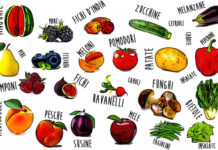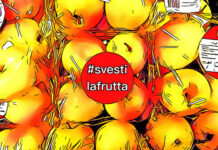Seasonal ailments are countered with January fruits and vegetables. Nature leaves nothing to chance.
A reminder of the varieties available provides Yuka, the app that helps people choose foods and cosmetics by discarding inconvenient ingredients. Starting with this list, let’s go over the virtues of January fruits, while also highlighting any contraindications.
January fruits and vegetables
The natural wealth of vitamins and minerals is a royal ally. A recent scientific review credits these dietary components with a proactive role even in preventing and counteracting Covid-19 virus, as we have seen.
More generally, the 5 servings of fruits and vegetables remain a must in a balanced diet. Also because of the valuable dietary fiber, which is very beneficial to health.
Fruits, a full load of vitamin C
Vitamin C-anti-cancer and anti-inflammatory-is the undisputed star of January’s fruit. We find large quantities of them in
oranges (50 mg/100g),
mandarins (42 mg/100g),
clementines (54 mg/100g),
bergamots (50 mg/100g),
Lemons (43 mg/100g the juice, 50 the whole fruit),
grapefruits (40 mg/100g),
kiwi (85 mg/100g).
When the fruit can do harm
Under particular conditions, even fruit can do harm, as the Humanitas Institute Encyclopedia reminds us. (1) In detail:
Orange. Consumption of orange is not recommended for those taking ACE inhibitors and those being treated with diuretics that may increase potassium levels in the body.
Bergamot. Bergamot can interact with medications that increase skin sensitivity to light, especially when used on the skin in oil form.
Lemon. The juice can damage tooth enamel causing irregularities in its surface, loss of gloss and discoloration.
Grapefruit. The fruit may interfere with the action of statins.
Kiwi. It contains oxalates, so it is contraindicated if you have kidney or gallbladder problems. It is not recommended for latex allergy sufferers because it contains molecules associated with the so-called latex-fruit syndrome. Kiwi consumption may also interfere with taking high blood pressure medications, anticoagulants, and antiplatelet drugs.
January’s vegetables
In addition to fruits, January vegetables help complete the intake of the 5 beneficial vegetable servings.
To preserve the properties of vegetables, cooking should be minimized and the water should be reused.
The goodness of cabbage
Broccoli, cauliflower, and cabbage are cruciferous vegetables rich in glucosinolates, substances that may play a protective role against cancer and help the liver eliminate toxins.
Brussels sprouts are rich in calcium (well assimilated) and vitamin C.
Kale is one of the richest vegetables in calcium, and red cabbage is a source of potassium, phosphorus, and vitamin K. It is also a source of cyanidin, an antioxidant responsible for its purple pigmentation.
Cabbage, Brussels sprouts, and savoy cabbage are dangerous sources of goitrogens for those with thyroid disorders.
Chicory and spinach
Chicory, native to Latium, is rich in nutrients: vitamin A, vitamin C, calcium, potassium and phosphorus.
Spinach is a source of beta-carotene, a substance that promotes eye health. Antioxidant properties help prevent cancer. Spinach may interfere with anticoagulants and diuretics. They contribute oxalic acid, which promotes stone formation. They may also contain goitrogens, as seen above, which are dangerous to thyroid health.
Other winter vegetables
Thistle contains silymarin, a protective substance for the liver.
Fennel is a good source of vitamin B9 and potassium. It contains a lot of fiber and is low in calories. Anethole, one of the essential oils in fennel, is associated with antibacterial and antifungal properties.
Endive contains cycloric acid-a compound with antioxidant properties-vitamins A, B9 and K.
Leek, a source of fiber and potassium, belongs to the same family as garlic and onion.
Red radicchio is rich in minerals. It is diuretic and depurative.
Marta Strinati
Notes
(1) SEE https://www.humanitas.it/enciclopedia/
Professional journalist since January 1995, he has worked for newspapers (Il Messaggero, Paese Sera, La Stampa) and periodicals (NumeroUno, Il Salvagente). She is the author of journalistic surveys on food, she has published the book "Reading labels to know what we eat".








